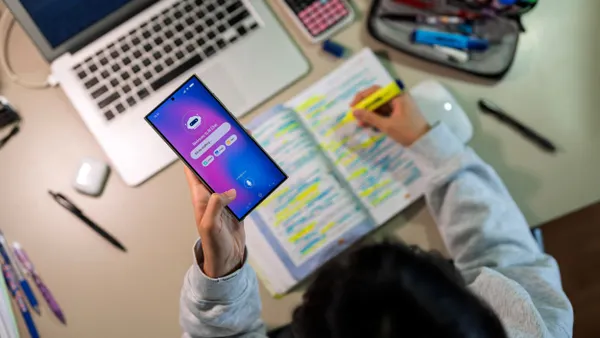Dive Brief:
- At four San Francisco high schools, students in beginning computer science classes are programming human-like robots as part of an initiative to get more pupils excited about coding and robotics, District Administration reports.
- The robots, called Pepper, have been donated to the schools and can move their heads, arms and feet, with students able to program tasks that include directing parents during a recent school night.
- The district is using a curriculum co-designed with Boston Public Schools and SoftBank Group, which designed the robots, and the goal is to have 30 robots in 15 of the city's high schools by 2021.
Dive Insight:
Educators know that students who can see the impact of their work are often more invested in their learning — particularly when it comes to tech skills.
For example, when pupils are learning how to write code — whether it’s Google’s drag and drop code, Blockly, or a more robust and text-based programming language like Python — seeing the end result of what's on their screens play out in a tangible way brings those lessons to life and boosts engagement. The experience can also help students develop problem-solving skills.
Additionally, students who have a chance at finding those solutions on their own may also feel more empowered, developing a stronger belief in their own abilities and seeing their self-confidence skyrocket. In turn, students can then take that self-assuredness into other arenas, whether they’re science-based or not, even before they graduate.
That’s the course many students are taking on the political front, with student activism now on the rise. Pupils are, on their own, planning marches, protests and even penning legislation to bring to local lawmakers in an effort to see their skills bring about action and change.
Students who believe there are real-world opportunities to use their learning tangibly may be more engaged. Creating a way for students to come to that realization — that learning isn’t just about test scores and grades, but about developing tools that could change lives — should be the goal for every educator, administrator and curriculum designer.






 Dive Awards
Dive Awards






